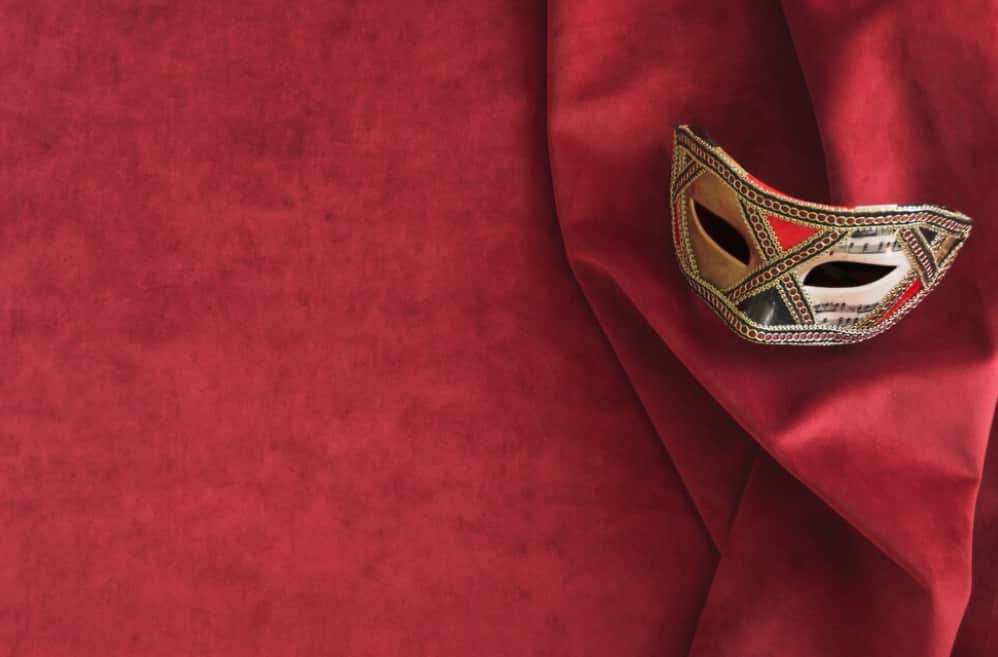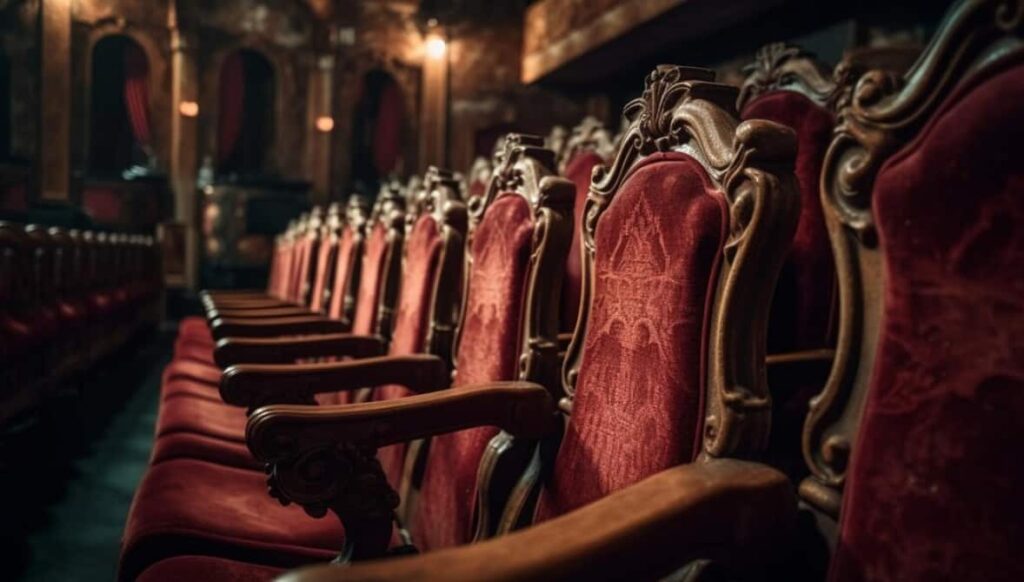
Phantom of the Opera: A Timeless Musical Triumph
Andrew Lloyd Webber’s “The Phantom of the Opera” transcends the boundaries of traditional musical theater, evolving into a cultural juggernaut that has enchanted and entranced spectators on a worldwide scale. Emerging from a hiatus during the pandemic, the production reemerges with a revitalized ensemble, brimming with renewed enthusiasm and artistic vitality. As we bask in the revival’s resplendent glory, it offers us an opportune moment to rekindle our affection for this theatrical masterpiece. This comprehensive review delves into the myriad facets that have firmly entrenched this production as an enduring and iconic gem in the illustrious realm of theater.
While “Phantom of the Opera” captivates audiences with its timeless allure and stunning performances, let’s now shift our focus to the unforgettable experience of “Les Misérables” in London, as we explore another exceptional theatrical production.
Timeless Tunes and Musical Mastery
At the heart of “The Phantom of the Opera’s” timeless and enduring success lies Andrew Lloyd Webber’s unrivaled mastery of the musical realm. His remarkable ability to seamlessly fuse pop sensibilities with the grandeur of musical theatre results in a score that transcends generations, leaving an indelible mark on the hearts of those who experience it. The music of “Phantom” is not merely a soundtrack; it’s an emotional journey. The iconic descending organ riff, accompanied by its synth-rock bass, emerges as a character in its own right, a melodic emblem that beckons us into a world where music reigns supreme.
Within this musical tapestry, a myriad of captivating hooks, poignant reprises, and recurring leitmotifs weave together to create a sonic landscape that resonates deeply with the audience. Each melody and refrain is meticulously crafted to elicit a range of emotions, often keeping spectators on the edge of their seats, fully immersed in the musical narrative. The strategic use of reprises and motifs throughout the production instills a sense of familiarity, inviting the audience to form a profound connection with the music, as if it were an old friend. In songs such as “The Music of the Night” and “All I Ask of You,” the seamless interweaving of melodies showcases Lloyd Webber’s unparalleled skill in constructing thematic continuity, a hallmark of his compositional brilliance. Through his musical wizardry, Andrew Lloyd Webber has not only created a masterpiece but has also embedded it into the very fabric of cultural history, where its melodies continue to resonate with the souls of audiences across the ages.
The New Cast: A Breath of Fresh Air

Lucy St. Louis breathes a refreshing vitality into her portrayal of Christine, offering a perspective that is both dynamic and profound. Drawing from her experience in embodying iconic figures such as Diana Ross in “Motown the Musical,” she brings a unique depth to the character. Her Christine is not merely the Phantom’s muse but also a radiant beacon of light and hope in the dark labyrinth of the story. Her voice, a captivating fusion of brightness and power, laced with a delicate vibrato, enchants the audience from the very first note, holding them spellbound until the final crescendo.
Killian Donnelly’s Phantom
- Killian Donnelly, known for his portrayal of Jean Valjean in “Les Misérables,” delivers a truly spectacular transformation as the Phantom;
- His rendition of the character is a masterful display of nuance, seamlessly navigating the fine line between menace and vulnerability;
- Donnelly’s performance is a mesmerizing tightrope walk, capturing the Phantom’s sinister intentions while laying bare his desperate longing for love and acceptance.
With each transition, from a gentle whisper to a commanding roar, Donnelly adds a rich and compelling layer to the character, making it his own in a remarkable way.
Rhys Whitfield as Raoul
Rhys Whitfield, stepping into the role of Raoul, infuses the character with a charisma that feels both rejuvenating and fitting. His portrayal transcends the clichéd archetype of the romantic hero, channeling an edge reminiscent of the multifaceted personas of real-life figures like Hugh Grant. Whitfield’s resonant vocal performance, particularly in the emotive “All I Ask of You,” goes beyond a mere declaration of love; it becomes a promise of hope and protection, solidifying his character’s place as an indispensable pillar of the story’s romantic core. In this latest rendition of “The Phantom of the Opera,” the talented ensemble brings a fresh and multi-dimensional perspective to their respective roles, adding new layers of depth and emotional resonance to an already timeless narrative.
Visual Spectacle and Theatrical Magic

The “Phantom of the Opera” production stands out as a testament to its commitment to traditional theatrical effects, a rare dedication in a digital age dominated by technological wizardry. It proudly holds its position as a bastion of classic stagecraft, embracing tangible and analog elements that hark back to the roots of theatrical magic. Through the use of trapdoors, billowing smoke, and the mesmerizing skull-topped cane that shoots fireballs, this production immerses the audience in a world where the magic happens right before their eyes. These elements not only serve to enhance the storytelling but also pay a heartfelt homage to the time-honored traditions of theatrical spectacle that have captivated audiences for centuries.
The late Maria Björnson’s designs are nothing short of awe-inspiring and contribute significantly to the production’s visual splendor. Her maximalist approach brings a lavish and opulent aesthetic to every facet of the show, perfectly complementing the grandeur of the music. The vivid and extravagant masquerade ball, the graceful and Degas-inspired ballet sequences, and the hauntingly alluring Phantom’s lair are all vivid examples of her extraordinary vision. Björnson’s designs don’t just serve as set decoration; they are portals that transport the audience deep into the heart of the narrative, immersing them in a world where every visual detail contributes to the overall magic of the theater. In a world where technology often takes center stage, “The Phantom of the Opera” stands as a testament to the enduring power and charm of traditional theatrical artistry and design.
Conclusion
“The Phantom of the Opera” is an enchanting symphony of sights and sounds that transcends generations, continuing to weave its mesmerizing spell upon audiences of all ages. In its latest iteration, this timeless tale not only preserves the enchantment and grandeur of its predecessors but also breathes new life into its narrative, reaffirming the enduring allure of both its story and music. Whether one is embarking on the Phantom’s haunting journey for the first time or returning to an old and cherished favorite, this production promises an unforgettable odyssey into the very heart of musical theatre.
With its sublime music, brought to life by spellbinding performances, and a visual design that is nothing short of breathtaking, “The Phantom of the Opera” stands as an enduring testament to the unrivaled power and beauty of live theatre. It transcends the boundaries of time and space, creating a profound connection between the audience and the world on stage. This production serves as a shining beacon, a reminder of the everlasting impact and magic that only live theatre can deliver, reaffirming its position as a beloved masterpiece that will continue to captivate hearts and souls for generations to come.